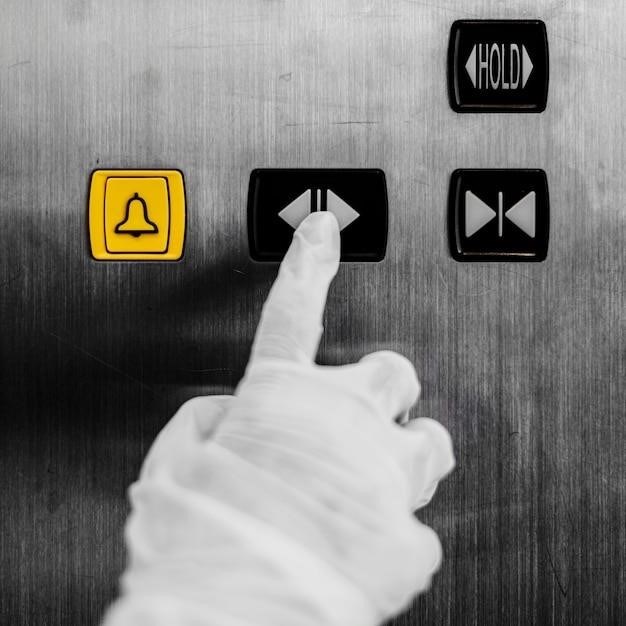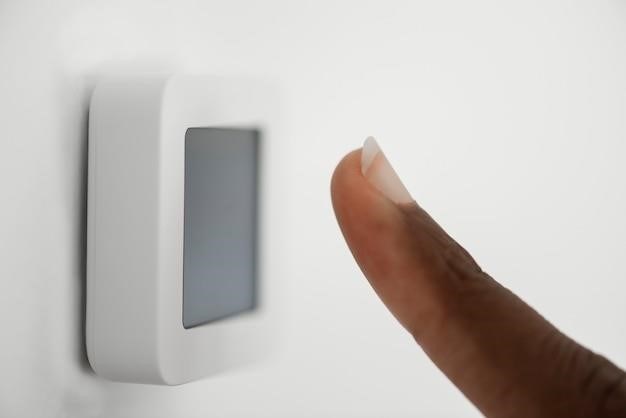Manual Transmission Neutral Safety Switch⁚ A Comprehensive Guide
This guide explores the crucial role of the clutch safety switch (often mistakenly called a neutral safety switch) in manual transmission vehicles. We’ll cover its location, function, troubleshooting common malfunctions, and the repair/replacement process, ensuring safe and efficient vehicle operation.
Understanding the Clutch Safety Switch
In manual transmission vehicles, the “neutral safety switch” is more accurately termed a clutch safety switch. Unlike automatic transmissions, where a neutral safety switch prevents starting unless the gear selector is in Park or Neutral, a manual transmission’s clutch safety switch ensures the engine starts only when the clutch pedal is fully depressed. This vital safety feature disengages the engine from the transmission, preventing the vehicle from lurching forward unexpectedly if the car is in gear when the ignition is engaged. The switch is typically a simple mechanical device, often a microswitch, activated by the clutch pedal linkage. When the clutch is pressed, the switch closes, completing the circuit that allows the starter motor to operate. Releasing the clutch opens the switch, interrupting the circuit and preventing the engine from starting while the transmission is engaged.
Location and Identification of the Switch
The clutch safety switch’s location varies depending on the vehicle’s make and model, but it’s generally found near the clutch pedal assembly. Often, it’s mounted on the clutch linkage itself, sometimes directly on the pedal or on a bracket nearby. Visually, it resembles a small cylindrical device, often with two or more electrical connectors. It may look similar to a brake light switch. To locate it, start by examining the area around the clutch pedal, looking for a small, usually plastic, component with wires connected. A vehicle’s repair manual or online resources specific to the car’s model can provide precise location diagrams. Remember to disconnect the battery’s negative terminal before attempting any inspection or repair to prevent accidental electrical shorts. Take photos before disconnecting any components to aid reassembly. Always prioritize safety when working on your vehicle’s electrical system.
Symptoms of a Faulty Clutch Safety Switch
A malfunctioning clutch safety switch can manifest in several ways, often impacting the vehicle’s starting mechanism. One common symptom is the inability to start the engine unless the clutch pedal is depressed fully and held down. If the engine cranks regardless of clutch position, or if it starts intermittently, these could indicate a faulty switch. Another potential sign is an engine that cranks in neutral but not when the clutch is depressed. Additionally, a faulty switch might result in the engine starting in gear, presenting a significant safety hazard. Erratic starting behavior, such as the engine struggling to start or exhibiting inconsistent cranking, can also suggest a problem. Electrical issues within the switch itself can lead to a complete failure to start. In some cases, a malfunctioning switch might not cause obvious starting issues but could contribute to other electrical problems within the vehicle’s system. If you experience any of these symptoms, a thorough inspection of the clutch safety switch is crucial.
Diagnosing Problems with the Neutral Safety Switch
Diagnosing issues with a manual transmission’s clutch safety switch often begins with a visual inspection. Check the switch’s physical condition for any signs of damage, corrosion, or loose connections. A multimeter can be used to test the switch’s electrical continuity. With the clutch pedal depressed, the switch should show a closed circuit; when released, it should be open. If the switch fails this test, replacement is likely necessary. Testing the switch’s wiring harness for breaks or shorts is also important. A malfunctioning switch might be causing erratic electrical signals. Observe the starting behavior under various conditions⁚ clutch fully depressed, clutch partially depressed, and in neutral. Document any inconsistencies. If the problem persists after these checks, more advanced diagnostic tools or professional assistance may be required. Remember to consult a repair manual specific to your vehicle’s make and model for detailed diagnostic procedures and safety precautions.

Repair and Replacement Procedures
Replacing a faulty clutch safety switch involves accessing the switch, usually located near the clutch pedal. Follow a step-by-step guide specific to your vehicle, using the appropriate tools and materials. Always disconnect the battery’s negative terminal before starting.
Accessing the Switch for Repair or Replacement
Accessing the clutch safety switch varies greatly depending on the vehicle’s make, model, and year. Consult your vehicle’s repair manual for precise instructions. Generally, you’ll need to gain access to the area around the clutch pedal, often requiring removal of the lower dashboard panel or parts of the footwell trim. This may involve disconnecting electrical connectors and removing fasteners such as screws or clips. Take photos as you disassemble components to aid reassembly. Remember to disconnect the battery’s negative terminal before beginning any electrical work to prevent accidental short circuits. Be cautious when handling electrical connectors, ensuring a firm connection upon reassembly to avoid malfunctions. Work in a well-lit area with adequate workspace to avoid damaging components. Always prioritize safety and use appropriate tools for the job. Once access is gained, the switch itself is usually easily identifiable.
Step-by-Step Replacement Guide
After accessing the switch (refer to the previous section for details), carefully disconnect the electrical connector(s) from the old switch. Take note of their orientation for correct reconnection; Then, using the appropriate tools (likely a socket or wrench), remove the retaining fasteners securing the switch. Gently remove the old switch, taking care not to damage surrounding components. Install the new switch, ensuring it’s properly seated. Reconnect the electrical connectors, matching their orientation to the previous connections. Secure the new switch with the retaining fasteners. Reconnect the battery’s negative terminal. Test the switch by attempting to start the engine with the clutch both depressed and released. The engine should only start with the clutch depressed. If not, double-check all connections and the switch’s installation. If the problem persists, consult a professional mechanic. Remember to reassemble all removed components, following the reverse order of disassembly.
Tools and Materials Needed
Before commencing the repair or replacement, gather the necessary tools and materials. This will ensure a smooth and efficient process. You’ll need a new clutch safety switch, specifically the correct one for your vehicle’s make and model. A reliable parts supplier or your vehicle’s service manual can help identify the correct part. Regarding tools, you will likely need a socket set, possibly including both metric and standard sizes, depending on your vehicle. A wrench may also be required, again depending on the switch’s mounting method. A screwdriver (Phillips or flathead) may be necessary to remove trim pieces or access panels. Electrical tape can secure wiring and connectors. Always disconnect the battery’s negative terminal before working with electrical components; a battery wrench is needed for that. Finally, consult your vehicle’s service manual for specific torque specifications for fasteners to prevent damage. Having these materials readily available will streamline the process.

Prevention and Maintenance
Regular inspection of the clutch safety switch and its wiring is crucial for preventing issues. Keep the area clean and dry to avoid corrosion and ensure optimal performance and longevity of the switch.
Regular Inspection and Cleaning
Proactive maintenance significantly extends the lifespan of your manual transmission’s clutch safety switch. Begin by visually inspecting the switch for any signs of damage, such as cracks, corrosion, or loose wiring. Pay close attention to the connection points, ensuring they are securely fastened and free from debris. A build-up of dirt, grime, or moisture can impede electrical conductivity and lead to malfunctions. Use a clean, dry cloth or compressed air to gently remove any accumulated dirt. For more stubborn contaminants, a mild degreaser followed by thorough rinsing and drying is recommended. Remember to disconnect the battery’s negative terminal before any cleaning or maintenance to prevent accidental short circuits. After cleaning, carefully reconnect the battery terminal and test the switch functionality. Regular cleaning, ideally as part of routine vehicle maintenance, ensures smooth operation and prevents premature failure.
Avoiding Common Issues
Preventing problems with your manual transmission’s clutch safety switch involves understanding its operational limitations and potential failure points. Avoid harsh impacts to the clutch pedal or linkage, as these can damage the switch’s internal components or compromise its wiring connections. Regularly inspect the clutch pedal’s travel and ensure smooth, consistent engagement. Excessive play or stiffness can strain the switch and hasten its deterioration. Avoid attempting DIY repairs without the necessary knowledge or tools, as improper handling may cause further damage or create safety hazards. Always use genuine replacement parts from reputable sources to ensure compatibility and reliability. Regularly checking for corrosion, particularly in damp climates, is crucial. Apply a protective coating to exposed metal parts to prevent rust and ensure consistent electrical conductivity. By following these preventative measures, you significantly reduce the risk of premature failure and maintain the reliable operation of your clutch safety switch.
Long-Term Care for Optimal Performance
Prolonging the life of your manual transmission’s clutch safety switch requires a proactive approach to maintenance. Regular visual inspections for signs of wear, corrosion, or damage are essential. Pay close attention to the switch’s wiring harness for any fraying or loose connections. Periodically clean the switch and its surrounding area to remove dirt and debris that could interfere with its operation or cause corrosion. Consider applying a dielectric grease to the switch’s electrical connectors to protect against moisture and improve conductivity. If you notice any unusual behavior, such as difficulty starting the vehicle or inconsistent engagement, address the issue promptly before it escalates into a more significant problem. While the switch itself is relatively inexpensive, neglecting maintenance can lead to costly repairs or even the need for a complete transmission overhaul. Remember that a properly functioning clutch safety switch is crucial for safety and reliable vehicle operation.

No Responses